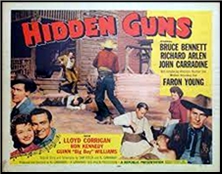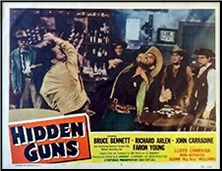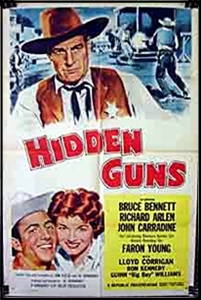Reviewed by DAVID VINEYARD:
JANET EVANOVICH & LEE GOLDBERG – The Heist. Bantam, hardcover, June 2013; paperback, February 2014.

It used to be when writers collaborated they actually collaborated, but today more often than not mega-sellers like Janet Evanovich (the Stephanie Plum series and Lizzy & Diesel series) provide front names for original work by others — often well known even bestselling writers like Justin Scott, Thomas Perry, Eric Lustbader, and Lee Goldberg.
Despite the picture of the two authors on the back of the jacket of the hardcover, there is little chance that Janet Evanovich actually wrote this, though she likely came up with the concept with her agent, publisher, and even Goldberg (a screenwriter, producer, and author).
Clive Cussler, James Rollins, and others have these franchises as do deceased writers such as Tom Clancy, Harold Robbins, Robert Ludlum, and in the past Alistair MacLean.
The Heist is a short book, under 300 pages, and basically reads like the pilot for a television series on one of the networks, loosely borrowed from Elmore Leonard’s Out of Sight, though slicked up more like Remington Steele than Leonard’s gritty charming book and the film it inspired.
Kate O’Hare is a gung-ho FBI officer with a special relationship with brilliant con man and criminal Nicholas Fox. As the book opens she is about to close in on Fox, and we learn some of their back story as she ponders catching him. The incident where he pulled off a heist and then hid in her hotel room plundering the mini-bar and even stealing the towels still irks her. But not as much as the Toblerones, her favorite candy bar, that he took.
Fox makes a wild escape from that trap, but she does get him, literally driving a bus into his car in pursuit soon after. They meet, flirt, she wants to kill him, and sleep with him — and then he escapes, almost impossibly on the way to court.
Kate flips out, and she reacts badly when she is not assigned the case. But she thinks she knows where Nick is; Mount Athos in Greece, where a priest calling himself Father Dowling recently arrived. Kate, a former SEAL (the authors acknowledge that Demi Moore aside there are no women SEALS, but they think there should be) whose father is a former SEAL, recruits him to help her, and she corners Fox, finally got him, a Federal fugitive. Done deal.
One problem. Nick is sitting there with her boss Jessup, and the Deputy Director of the FBI.
It will take a stretch of your imagination to bite on the next part, though it is one of those things in movies and television we shrug off with a smile depending on how much we enjoy the show (Castle is the best example). The major flaw here is this kind of thing is a harder sell in a book, and it is pretty much just dumped in your lap here. It seems the FBI is going to finance Nick’s swindles in return for freedom after five years, if he will help take down criminals they currently can’t touch. One of those handy secret funds Congress can’t trace will fund the thing.
This gets dumped on the reader about as gracelessly as they dump it on Kate after one of those phony test missions that only happen in books and movies when they don’t have enough story to fill the time given.
Meanwhile Nick will be on the Most Wanted list hunted by police around the world and Kate will be in charge of seeing he isn’t caught, unless he double crosses the FBI, which there is no guarantee he won’t do.
Of course she hates the idea.
He loves it. He can torment Kate, who is clearly interested in.
And he can steal more of her Toblerones.
Well, hard to blame her for her doubts, it is kind of stupid. You have to wonder they didn’t recruit G. Gordon Liddy and Howard Hunt.
I always found It Takes a Thief a bit of a stretch as much as I enjoyed it.
Then again Sidney Reilly, the great British spy, was a serial bigamist who may have murdered at least one of his eleven wives, and Eddie Chapman, head of the Gelignite Gang in pre-War England, was one of the most effective British agents of the war, himself actually a handsome dashing womanizer who might of stepped out of a novel by Leslie Charteris written with Ian Fleming and Peter Cheyney.
It isn’t as if the OSS didn’t recruit Lucky Luciano to help us invade Sicily.
Not that any of that lifts this out of the realm of pure fantasy.
I just don’t happen to mind the realm of pure fantasy once in a while.
Their first big case fills out the second half of the book as they go after a corrupt investment banker hidden out on a private fortress island in Indonesia with a team that includes Kate’s dad, a wanted wheelman (have to have car chases), and a flamboyant actor, because two people can’t carry a series by themselves no matter how charming they are.
At this point they have added Mission Impossible to their list of creative borrowing.
Originality in Hollywood is stealing equally from everyone.
There are no surprises here, not a lot of suspense either, since there really isn’t time for either the romance or any of Nick’s schemes to play out.
Basically, like Goldberg’s books for the Monk series, this is a novelization of something that never got made.
But wait, because I actually liked a good many novelizations, and surprise surprise, I like this.
It’s fast, it’s fun, the characters are attractive, if cardboard, the action moves at a pace, and the writing, if cinematic, is literate, and the dialogue plays cute between Kate and Nick with at least what passes for sophistication on television. It’s not either version of The Thomas Crown Affair, but you can imagine Fox as Pierce Brosnan if you want.
That’s what this is: a novelization of an unsold pilot that was never produced. But it’s also a quick read, and I bought it remaindered for under $5, so for the hour and an half it kept me entertained, and I recommend it highly. Add more detail, more depth to the characters, a few more high concept set pieces, and more plot, and you would have a damn good book.
What you have anyway is a pleasant time killer on a level with the kind of books most of us readily devoured in the fifties and sixties in paperback originals and mid-list mystery fare. That’s not as faint praise as it may sound. Some of those were more pleasure to read than some better books, and this one is a light escapist work with a bit of charm, something sadly missing today.
And its not bloated. Every page and every word goes right to plot, character, and action — a bit mechanically, granted, but there’s no side trips to distract you.
If it is lying around or you run across it, read it, but don’t spend much looking for it.
The Fox and O’Hare series —
The Heist. June 2013.
The Chase. February 2014.
The Job. November 2014


